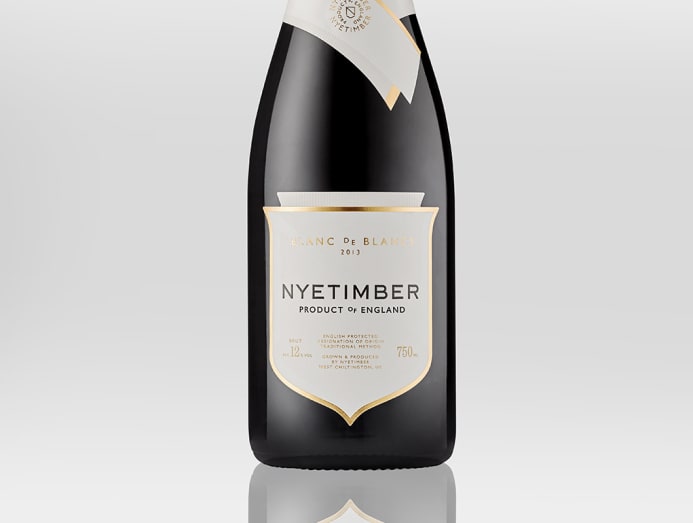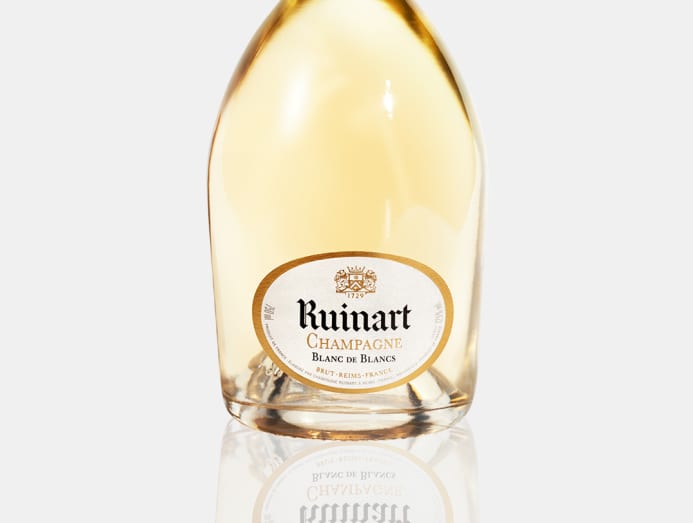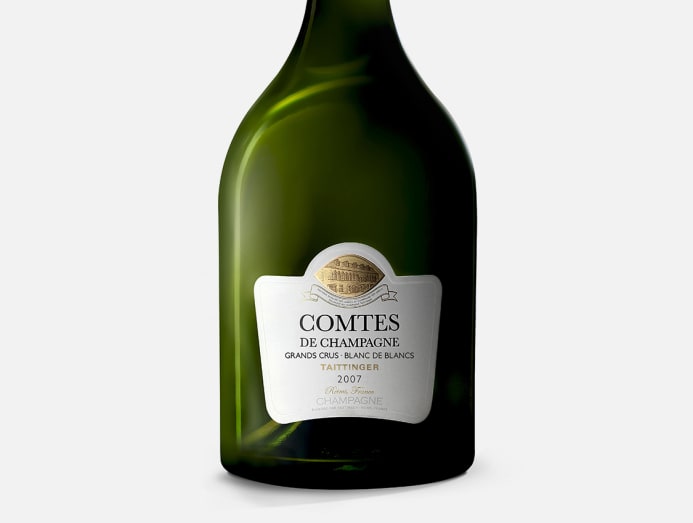White gold: What makes Blanc de Blancs champagnes so loved by oenophiles?
Some things only brand sense in French or, more specifically, the French wine vernacular. Blanc de Blancs, when translated into English, reads as 'White of Whites', a preposition flanked by two identical nouns. It sounds disruptive and a trivial circuitous. Merely it all clicks into identify in the delicate alchemy of champagne production.
The majority of champagnes are made from a blend of three grape varieties: Pinot Noir, Pinot Meunier, and Chardonnay. Although the outset two are blackness grapes used for reddish wine, they are pressed gently to avert whatsoever extraction of colour from the skins, resulting in a colourless juice. After fermentation in tanks, the wine from each grape is blended together. Yeast and carbohydrate are added to the wine before information technology undergoes a 2d fermentation in the bottle, producing carbon dioxide and creating bubbling.
Each grape diverseness contributes its own characteristics to the blend. Pinot Noir lends scent and structure, Pinot Meunier gives fruitiness and roundness, and Chardonnay imparts elegance and minerality.
Recognising the finesse that Chardonnay gives to the blend, many champagne producers likewise make a bubbly out of Chardonnay lonely – a Blanc de Blancs, a clear wine from only a white grape. Now the term is crystal clear (no pun intended), isn't it?
Many oenophiles consider Blanc de Blancs to be the purest form of Chardonnay. This doesn't hateful it is meliorate than blends, only, as a bubbly, its single varietal expression captures the fresh, white fruit profile of Chardonnay like no other. Gerald Lu, head sommelier of Praelum Vino Bistro, thinks blends are the "heart and soul of champagnes", but "a Blanc de Blancs is a sparkling Chardonnay at its nearly delicate and elegant".
Some champagne producers have become synonymous with Blanc de Blancs: Ruinart, the oldest champagne house, is known for its flagship not-vintage Blanc de Blancs, which has, in contempo years, become the de facto Blanc de Blancs pour of many sommeliers. Champagne Salon and Pierre Gimonnet et Fils make but Blanc de Blancs bubblies, and, similar Ruinart, source fruit solely or largely from the Cote des Blancs – Champagne's top region for Chardonnay – a exercise that has shaped their house or signature way.
The chalky soils of the Cote des Blancs are known for producing grapes with good acidity, a coveted trait. Salon, for example, gets its Chardonnay from Le Mesnil-sur-Oger, 1 of Cote des Blancs' six Grand Cru vineyards (the others are Avize, Chouilly, Cramant, Oger, and Oiry).
Other champagne houses permit Chardonnay play a ascendant function in their cuvees or blends. Taittinger, 1 of the biggest producers in Champagne, is known for using Chardonnay as its master component in all the blends in its portfolio. The Chardonnay comes from the 5 Grand Crus of Cramant, Avize, Chouilly, Oger, and Le Mesnil-sur-Oger.
Taittinger'southward Blanc de Blancs – the vintage Comtes de Champagne – is widely regarded as one of the finest Blanc de Blancs ambrosias from Champagne. "This cuvee benefits from the greatest care in all stages of its development," said Taittinger's cellar master Alexandre Ponnavoy. "[Information technology is] the perfect expression of our Taittinger house fashion, and the near cute expression of Chardonnay."
Nosotros pick iii Blanc de Blancs bubblies yous should bank check out.

English winery Nyetimber planted its first vines of Chardonnay, Pinot Noir, and Pinot Meunier in the S Downs in 1988, at a fourth dimension when anybody else was growing German varieties. Today, the Sussex-based estate has go the poster boy for the rise of English sparkling wine, making bubblies that would give their counterparts across the Aqueduct a run for their money. The Blanc de Blancs 2013, which was released this year, is very well-baked and delicate, with notes of figs, vanilla and toasted bread, all wrapped up in a long cease.
Available from Analogue Wine Merchant

A perfect introduction to Blanc de Blancs – and a failsafe option to tote to a vino party – this bubbly is a delicious swirl of citrus, figs, white flowers, and peaches. It too bears that distinctive smoothness that makes Ruinart such a crowd pleaser. Pair this with shellfish like lobsters and langoustines.
Available from 1855 The Bottle Shop

The year 2007 was considered a practiced yr in Champagne, a sentiment that led to the product of this vintage Blanc de Blancs. It offers an aroma of white flowers and minerals, and notes of raisins, biscuits, and citrus. Acidity is razor-precipitous. If you have the patience, cellar this and drink it in another few years. By then, Ponnavoy said that y'all can expect "subtle aniseed, smoky aromas, and a brioche character".
Available at Culina Dempsey
READ> The Singaporean champagne collector with 3,000 bottles for friends and family
Source: https://cnalifestyle.channelnewsasia.com/experiences/what-makes-blanc-de-blancs-champagnes-so-loved-by-oenophiles-239576
0 Response to "White gold: What makes Blanc de Blancs champagnes so loved by oenophiles?"
Post a Comment